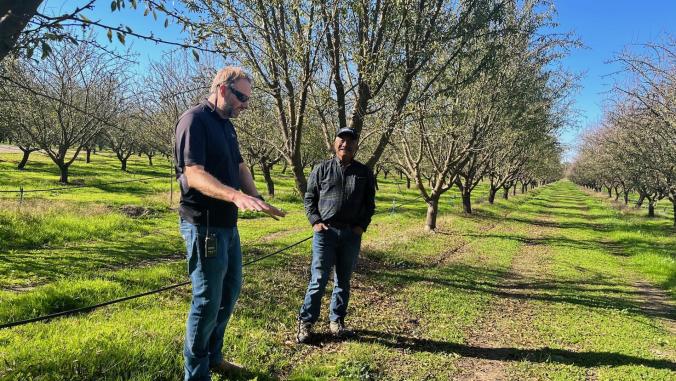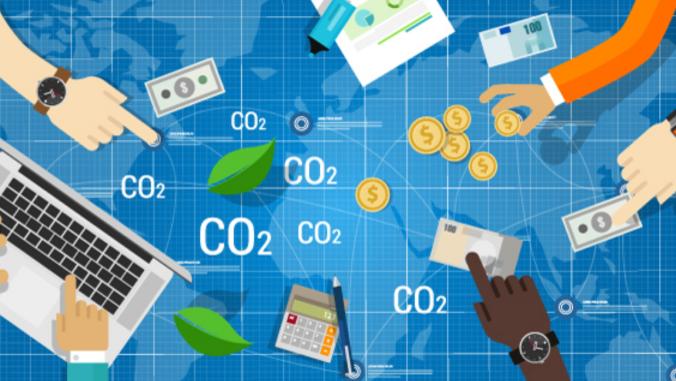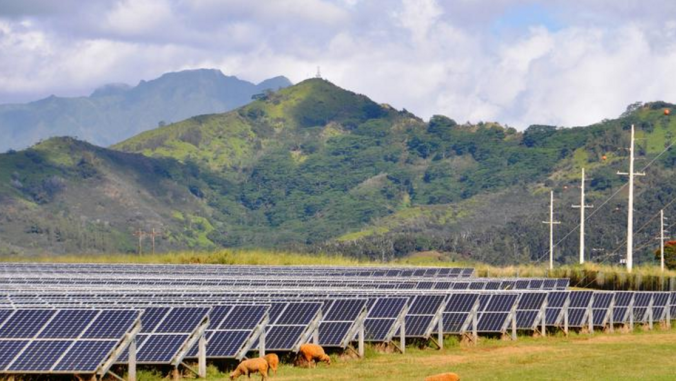General Mills brings supply chain into emissions goal
The food giant pledged a 28 percent greenhouse gas reduction across its entire business and value chain.

Taking bolder responsibility for greenhouse gas emissions by its supply chain of farmers and mills and packagers than is typical, General Mills announced a goal to cut greenhouse gas emissions across its entire business — “from farm to fork to landfill” — by 28 percent within 10 years.
The maker of Cheerios, Haagen Dazs ice cream, Pillsbury cake mixes and dozens of other products that collectively bring in $17.6 billion in annual sales becomes the first big food company to set a specific goal to slash emissions beyond its direct operations. It even included consumers in the act.
The giant food company did not provide many specifics, however, of how it would in fact control its suppliers’ or consumers' actions with regard to GHG emissions. Given that General Mills, like most food companies, buys not from farmers but from mills and processors, it does not have direct relations with them.
Still, if its new goal spurs others in the industry to try to cut supply chain emissions, that could make a dent in the amount of carbon floating above the earth because agricultural accounts for nearly a third of worldwide GHG emissions, and large food conglomerates dominate the world food business.
General Mills does business in more than 100 countries and has food manufacturing in at least 15 countries. Two years ago, it committed to sustainably source 100 percent of its main ingredients — 10 commodities that include wheat, oats, milk, corn and cocoa. So it already has begun working with suppliers and farmers to strengthen sustainable farming practices such as using less GHG-producing fertilizer.
But in stating the new emissions goals extend through its supply chain, the company is also acknowledging that a food company’s direct operations are small compared to the far-flung network of farms and mills and processors that it depends on.
General Mills said more than two-thirds of its total greenhouse gas emissions occur upstream of its direct operations. So to make a dent in emissions that it is ultimately responsible for, General Mills had to act beyond those direct operations.
Organizations advocating that companies take greater responsibility for what happens in their supply chains lauded the move.
"This is a great step by General Mills. They correctly point out that the majority of their emissions are beyond their direct operational control," said Dexter Galvin, head of supply chain at CDP.
"How General Mills engages with their suppliers to achieve the target is the key next step," he continued. "They need to work through established forums to engage suppliers in a standardized format so that the suppliers don’t become inundated with lots of different customer requests for the same information," noting that other food companies are trying to bolster sustainability in their supply chains and collaboration among them would work best.
Science-based goals
General Mills said the 28 percent target reduction was calculated using science-based methodology to figure out its needed contribution to the internationally agreed upon goal of a 50 to 70 percent reduction in GHG emissions by 2050.
That is the aim set by the Intergovernmental Panel on Climate Change, which in turn has served as a sort of outline or background document for the United Nations Climate Convention (COP21) in December in Paris.
General Mills Chief Sustainability Officer Jerry Lynch told GreenBiz that viewing the company's potential responsibilities in the context of COP 21 and the IPCC framework is what produced the 28 percent reduction across the value chain commitment.
“The driver was what does science tells us we need to do?” Lynch said. “The timing was in the context of this being a big year for doing something about climate change, with the Paris meeting coming up.”
COP21 in Paris has been billed as the most important climate summit in history, with the goal of forging a strong global agreement to address climate change. {See GreenBiz coverage of the runup to CO21 here.}
The announcement of the bold goal also puts General Mills firmly in the camp of believing that climate change is real and a threat to business.
CEO and Chairman Ken Powell, in an interview with the Associated Press about the goals, said, “We think that human-caused greenhouse gas causes climate change and climate volatility and that’s going to stress the agricultural supply chain, which is very important to us.
“Obviously we depend on that for our business, and we all depend on that for the food we eat.”
His comments come even as presidential candidates from nearby states deny that climate change is a problem and bash efforts to do something about it as harming the economy.
How the goal was set
General Mills stressed the scientific method it used to determine what the IPCC — and different tools developed in conjunction with it — indicate the private sector needs to do for the health of the planet.
Working with sustainability consultants at BSR, “we referenced the IPCC guidance and referenced WWF's 3 Percent Solution. Then BSR helped us spend a fair amount of time with a tool the Sectorial Decarbonization Approach,” Lynch said.
The 3 Percent Solution, developed by the World Wildlife Fund and CDP, states that for the world to be on track to keep the rise of global temperatures below 2 degrees Celsius, the corporate sector in the United States must reduce its total GHG emissions 3 percent annually, or by 1.2 gigatons of carbon dioxide by 2020.
The Sectoral Decarbonization Approach is a tool developed by the CDP, the World Resources Institute and World Wildlife Fund to help calculate what each sector of the economy needs to contribute in GHG reductions to get to the 50 to 70 percent reduction by 2050 goal. It also can be used by individual companies to calculate their part of the sectoral responsibility.
General Mills will spend $100 million on energy efficiency and clean energy upgrades in its own operations to move toward the 28 percent GHG emissions reductions.
Then it plans to work with suppliers and their farmers to encourage use of sustainable agriculture practices that build climate-resilient, healthy soils. That includes expanding its organic food operations so that it sources from roughly 250,000 more acres devoted to organic produce. That means it can avoid synthetic fertilizers, which emit carbon and other greenhouse gases, according to the U.N.'s Food and Agriculture Organization.
While the food industry has been an active sector in sustainability and reducing carbon footprints, with Mars Inc. converting to 100 percent renewable energy use in its operations and Kellogg actively working with its supply chain on helping farmers learn about conserving water, land and resources, General Mills is hopeful its new goal will spur other food companies to set specific goals on GHG emissions in supply chains.
“Absolutely ... we hope this inspires others. There’s a lot of good work going on in the industry but we hope it inspires others,” Lynch said. “There is so much work to be done, particularly upstream. There is a lot of room for precompetitive collaboration.”
Already major food companies — Kellogg, Pepsi Co., Unilever, Land O'Lakes, McDonald's — are collaborating through the Field to Market goals of the Alliance for Sustainable Agriculture. Joining them are farm trade associations, seed companies, mills, NGOs and aggregators such as Cargill.
Consumers too
General Mills’ greenhouse gas reduction goals also extend to its customers, based on its “farm to fork and landfill” stated commitment.
Asked how the company will convince consumers to reduce GHG emissions, Lynch said that 80 to 85 percent of its packaging is recyclable, so the company is rolling out new packaging with labels that instruct consumers how to recycle.
“We also think there is opportunity to provide consumers with usage instructions that could drive down carbon footprint — cooking instructions that are less carbon intensive than others,” Lynch said.
About 25 percent of General Mills’ sales come from baking products and semi-prepared foods such as cake mixes, flour, frozen vegetables and frozen dinners, all of which have cooking instructions.
And it is expanding its organic food production and sales, aiming to make it a $1 billion business from about $600 million now, Lynch said.
But these are complicated goals because of the questionable clout that one food company — albeit a big one — can have on consumers or farmers and suppliers.
"The food industry is a very complex system because we have 7 billion players involved — soon to be 9 billion," Lynch said, referring to the number of people in the world and the predictions of world population by mid-century.





